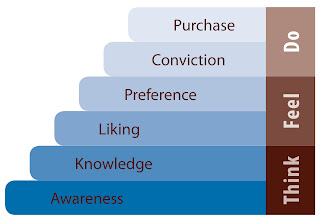Advertiser Skills:
Critical: A method of thinking that questions assumptions. It is a way of deciding whether a claim is true, false, or sometimes true and sometimes false, or partly true and partly false.
Critical thinking is essential when advertising because consumers are going to constantly be tearing apart advertisements to find the real truth. This is why advertisers need to think critically when putting advertisements together. They need to make sure all statements are true so that there is no questions left unanswered.
Creative: A phenomenon where a person creates something new (a product, a solution, a work of art, etc.) that has some kind of value. What counts as "new" may be in reference to the individual creator, or to society as a whole. What counts as "valuable" is similarly defined in a variety of ways.
Creativity and creatively thinking are HUGE components in advertising. If people weren’t creative/innovative when producing their products or while advertising, we would have a million of the exact same products floating around and people would easily get bored. It is the creativity that catches the consumer’s attention in advertising. People are, and will always be, looking for the next best thing which is why, we as advertisers, need to be constantly innovating our products/advertisements.
Example:
Awhile back in my marketing class we watched this video on vacuums. I thought it was going to be super boring and irrelevant, but it ended up being extremely interesting and the topic happens to fit this week’s topic well.
Before 1869 carpets and rugs were cleaned by hanging them and beating them to get as much dirt out of them as possible. Luckily for us, times have changed and cleaning our carpets is becoming easier and easier as time goes on.
Timeline:
1869: “sweeping machine” was patented. Not motorized, but cleaned rugs.
1899: John Thurman invented a gasoline-powered vacuum. Some historians consider this the first motorized vacuum cleaner
1901: Hubert Booth patented a motorized vaccum cleaner. Large, horse-drawn, petrol-driven unit which was parked outside of the building and a long hose ran inside to do the cleaning.
1907: James Spangler invented a new portable and electric vacuum cleaner with attatched cloth filter bag and cleaning attachments.
1919: William Hoover and James Spangler formed the Electric Suction Sweeper Company. They produced the first commercial bag on a stick upright vacuum cleaner.
1920: “filter fiber” disposable bag was created
Cont….
As you can see in the first 50 years of the ‘vacuum’, things changed a lot and every time things changed it was to better improve the product itself, the uses, and the overall quality of the product. They were made to be more safe and easy to use for consumers which is how innovation works. Innovation takes a lot of creativity and realization to happen. If you look at vacuums now-a-days, you can find things like hovering vacuums cleaners, no-hands vacuum cleaners, or even the iRobot vacuum cleaner. All of these things have been created to improve the effectiveness and to ease the hassle of everyday cleaning for consumers.
Resources:







